
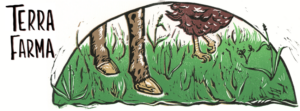 Rotational grazing and intensive management can often feel like a daunting task. Getting hung up on the how, when, where, and why is normal for new and experienced farmers alike. However, Oregon Pasture Network member, Mike Guebert of Terra Farma is here to help with demystifying this practice!
Rotational grazing and intensive management can often feel like a daunting task. Getting hung up on the how, when, where, and why is normal for new and experienced farmers alike. However, Oregon Pasture Network member, Mike Guebert of Terra Farma is here to help with demystifying this practice!
Check out the blog post on the Oregon Pasture Network website and learn from Mike about, specifically, the WHY question. Why is it that rotational grazing supports healthy ecosystems, combats climate change, and improves the year over year growth? Mike has answers to these questions and more. This blog post is the first in a series that we will be rolling out with Mike to help with the demystification of rotational grazing. Be sure to check in and stay up to date!
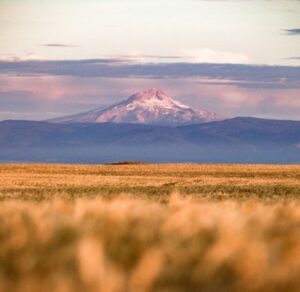 Since the late 1980s, the Carvers have been working on improving land stewardship in cooperation with their local agency partners inclusive of the Wasco County Soil and Water Conservation District and the local NRCS office. On their Imperial Stock Ranch (established 1871) located in north central Oregon near Shaniko, sheep, cattle, grain, and hay production have been continuous throughout their history. They implemented a Conservation Management Plan in 1989, which has served as their guiding document and philosophy since.
Since the late 1980s, the Carvers have been working on improving land stewardship in cooperation with their local agency partners inclusive of the Wasco County Soil and Water Conservation District and the local NRCS office. On their Imperial Stock Ranch (established 1871) located in north central Oregon near Shaniko, sheep, cattle, grain, and hay production have been continuous throughout their history. They implemented a Conservation Management Plan in 1989, which has served as their guiding document and philosophy since.
The Carvers’ focus on resource stewardship became important in a new way beginning in 1999. With the loss of traditional wool markets due to offshoring, they adapted and took their harvests of wool and lamb direct to consumers in value-added marketing. They had been implementing their Conservation Management Plan for 10 years at that point and were observing many positive changes on the land. They paired the products with their heritage and progressive agricultural practices, and it proved to be at the leading edge of the culture.
,
Fifteen years later, they provided their wool to Ralph Lauren for the Team USA uniforms at the 2014 Winter Olympics in Sochi, Russia. Their conservation story has been linked to the provenance of the wool since they began this new marketing journey. A year later Patagonia asked them to be 3rd party audited for their land stewardship and animal welfare, under a new global certification program. When the Responsible Wool Standard (RWS) launched in 2016, their Imperial Stock Ranch became the first ranch in the world to be certified. The comprehensive RWS has more than 270 criteria that must be met to achieve certification, and includes benchmarks for land, animal, and worker care.
With the increasing demand for certified wool in 2018 the Carvers launched Shaniko Wool Company to scale the supply of wool produced in the U.S. that meets this leading global standard. Today Shaniko Wool Company includes 10 ranches (and growing) that collectively graze 2.6 million acres in the western U.S. In early 2020, in response to the growing concern over ecosystem and climate impacts of food and fiber production, Shaniko Wool launched a new initiative–the Shaniko Wool Carbon Initiative. Working with a team of range scientists from Oregon State University, Dr. John Talbott developed a comprehensive research and measurement model implemented beginning in the spring of 2020. The purpose was to determine the ecosystem and climate impacts of each ranching operation with carbon as a key performance indicator, plus collateral benefits.
As the soil organic carbon levels are increasing significantly over time, additional positive benefits include:
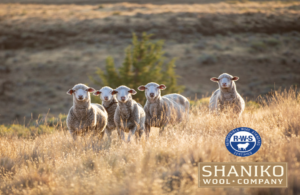
Increases in soil organic matter
Nutrient availability
Water infiltration and holding capacity
Systems biodiversity
Improved habitats
Resilience to weather extremes
Disease resistance
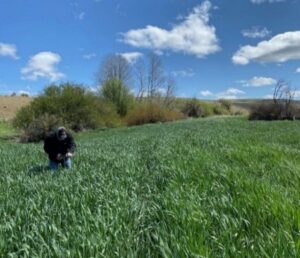 Jeanne Carver says, “Until now, we had our observations, yield data, resource agency testimony, field and species counts, and certification to third-party standards in support of our work. However, as ranchers, we had never formally “measured” or quantified our ecosystem deliverables. This work, giving us information we never had before, is a tool to influence future management and practices and supports an increased value of our harvest in markets. Importantly, it provides us with the data needed to potentially enter emerging ecosystem markets – an entirely new income stream.”
Jeanne Carver says, “Until now, we had our observations, yield data, resource agency testimony, field and species counts, and certification to third-party standards in support of our work. However, as ranchers, we had never formally “measured” or quantified our ecosystem deliverables. This work, giving us information we never had before, is a tool to influence future management and practices and supports an increased value of our harvest in markets. Importantly, it provides us with the data needed to potentially enter emerging ecosystem markets – an entirely new income stream.”
The Shaniko Wool Carbon Initiative includes third-party verification of:
Jeanne says, “We did not know what we would find when we began measuring. But it has been very encouraging to see the preliminary results from the first 3 years of measurements on our north central Oregon ranch.”
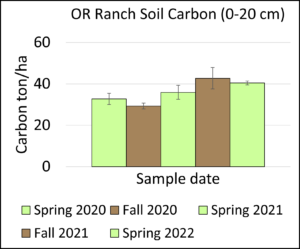
Shaniko Wool has two years of data on 1.5 million acres and has baselined another 1 million acres within the RWS farm group of ranches. As the research continues, they look forward to knowing the aggregate ecosystem impacts of the collective Shaniko wool supply. Jeanne says this is important information for their brand customers, and the most important work she has ever done. “In agriculture today, we have the opportunity for new stakeholders to join our work. I see voluntary carbon market companies who provide the framework, and brand partners who are investing in carbon insets to move their companies toward corporate sustainability targets, as new partners in agriculture at the origins of fiber.”
Shaniko Wool has been working with Agoro Carbon Alliance since February 2022. The hope is that in the near future, all ranches in the farm group will hold contracts for their measured carbon credits.
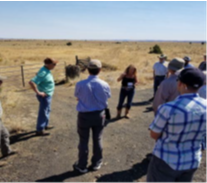 In 2022 Jeanne Carver hosted a tour of the Imperial Stock Ranch led by the Oregon Association of Conservation Districts through Its legislative tour program that is part of the Oregon Conservation Partnership work. Key legislators, agency staff, Oregon Agriculture Heritage Program Commissioners, and Wasco Soil and Water Conservation District staff took part and reviewed the work on the ranch supporting soil health and carbon sequestration. Their ranch has successfully transitioned to the next generation, building for the future.
In 2022 Jeanne Carver hosted a tour of the Imperial Stock Ranch led by the Oregon Association of Conservation Districts through Its legislative tour program that is part of the Oregon Conservation Partnership work. Key legislators, agency staff, Oregon Agriculture Heritage Program Commissioners, and Wasco Soil and Water Conservation District staff took part and reviewed the work on the ranch supporting soil health and carbon sequestration. Their ranch has successfully transitioned to the next generation, building for the future.
 Note: To learn more about Jeanne Caver’s work, read Stories of Fashion, Textiles, and Place: Evolving Sustainable Supply Chains by Jeanne Carver and Leslie Davis Burns. The book follows the journeys of companies with evolving sustainable supply chains in the fashion and textile industry. Those companies are committed to advancing the cultural traditions of a particular place. They value, honor, and are all deeply rooted in the geography, culture, and people of a specific location and their success is attributable to their connection to that place. With this shared value, their unique stories highlight the conditions, risks, strategies, and successes in creating and maintaining sustainable supply chains. (Amazon)
Note: To learn more about Jeanne Caver’s work, read Stories of Fashion, Textiles, and Place: Evolving Sustainable Supply Chains by Jeanne Carver and Leslie Davis Burns. The book follows the journeys of companies with evolving sustainable supply chains in the fashion and textile industry. Those companies are committed to advancing the cultural traditions of a particular place. They value, honor, and are all deeply rooted in the geography, culture, and people of a specific location and their success is attributable to their connection to that place. With this shared value, their unique stories highlight the conditions, risks, strategies, and successes in creating and maintaining sustainable supply chains. (Amazon)
More to the Story: About a year and a half ago, OPB went to Jeanne’s ranch and took photos and interviewed her. The story was just published on September 18, 2023.
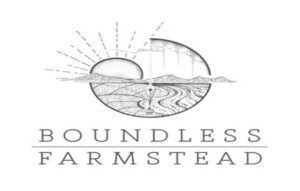 Boundless Farmstead is a CSA farm and a 20 acre property, ten acres in mixed vegetable production and cover crop, one acre orchard, three acres in mixed outbuildings and house, and about six acres in pasture.
Boundless Farmstead is a CSA farm and a 20 acre property, ten acres in mixed vegetable production and cover crop, one acre orchard, three acres in mixed outbuildings and house, and about six acres in pasture.
Here is sort of a crude map from Central Oregon Irrigation District that shows our field. The top half of our rectangular field is ten acres (where all of the rows are), the bottom half another ten acres (approximately). The top half is where we grow all of our vegetables/fruit and cover crop.
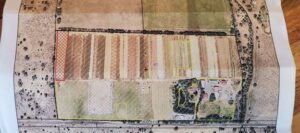 We practice crop rotation to minimize pests and disease. We cover crop with Rye, Triticale, Peas, Clover, and more to add green manure back to the land to sequester carbon. We wash our vegetables in fresh, clean Central Oregon water without adding bleach. We grow a diverse array of vegetables and never monocrop.
We practice crop rotation to minimize pests and disease. We cover crop with Rye, Triticale, Peas, Clover, and more to add green manure back to the land to sequester carbon. We wash our vegetables in fresh, clean Central Oregon water without adding bleach. We grow a diverse array of vegetables and never monocrop.
We divide the tens acres of production into 20 Blocks (Labeled 1 through 20). In a given year, the blocks will essentially alternate between cover crop and cash crop/vegetable production. All of these groupings will stay together and will move in rotation together. Our farm fertility and health are based around these practices: cover cropping and crop rotation.
We find it absolutely crucial to practice this level of crop rotation and cover cropping for a few reasons. Crop rotation is important because: (a) different crop families use different nutrients in the soil and growing them over and over again can either deplete soil or make it so more micronutrients and amendments must be added and (b) crop families can harbor diseases and pests and moving them frequently helps keep from a buildup of either. Cover cropping is very important to our farm specifically because (a) our soil quality is so poor (a very sandy loam) that we are trying to increase organic matter as much and as quickly as possible; (b) it helps to keep our topsoil from eroding in our extremely windy environment; (c) it adds nutrients back to the soil in “green manure” form; and (d) it provides an added bonus as many cover crops act as insectaries and pollinator habitats.
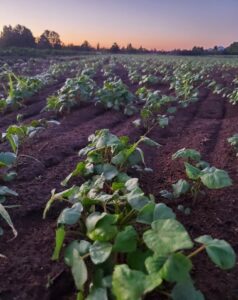
Here are a couple photos of some of our cover cropping areas. We are very passionate about this practice. We plant rye, triticale, winter peas, and crimson clover to overwinter, we then mow and till in the crop. We then plant a non-frost tolerant but fast-growing cover crop like Sudan grass or buckwheat in blocks that will be planted early the following spring so that the cover crop will “frost kill” and will lay over to protect the soil the during the winter but be easy to work up in the spring. In blocks that won’t be planted until later in the season, we plant oats. The whole point of this type of cover cropping is to work in as much biomass every season as possible. Our rye cover crop can be up to seven feet tall, and our Sudan grass cover crop is currently over ten feet tall. This is a lot of organic matter to add back to our very sandy soil.
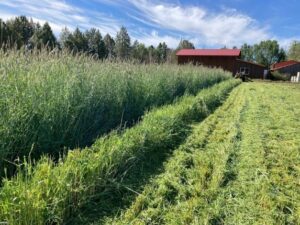 When we moved onto this farm, it had been a conventional hay farm for at least 12 years prior. The soil was very depleted and the microorganisms severely lacking. We have found that we still need to add micro and macro nutrients to the soil every year. So, what do we do about amendments? First, we do soil testing every fall/winter. We do a test for each of our greenhouses, the east field cover crop blocks, the east field vegetable blocks, the west field cover crop blocks, and the west field vegetable blocks; in all, we do eight different tests. Soil testing is crucial to know the right amount of nutrients to add without adding too much. Even in organic agriculture, too much organic fertilizer/amendments can be added and can create harm in the environment.
When we moved onto this farm, it had been a conventional hay farm for at least 12 years prior. The soil was very depleted and the microorganisms severely lacking. We have found that we still need to add micro and macro nutrients to the soil every year. So, what do we do about amendments? First, we do soil testing every fall/winter. We do a test for each of our greenhouses, the east field cover crop blocks, the east field vegetable blocks, the west field cover crop blocks, and the west field vegetable blocks; in all, we do eight different tests. Soil testing is crucial to know the right amount of nutrients to add without adding too much. Even in organic agriculture, too much organic fertilizer/amendments can be added and can create harm in the environment.
A video on our website shows a drive down the field. Notice the different blocks of vegetables then cover crop, then vegetables, and so on. The blocks of white flowers are a cover crop: flowering buckwheat. The “blank” spaces are spots that have been harvested already and are tilled and ready for more cover crops.
Northwest Climate Hub Newsletter: Monthly newsletters from the Northwest Climate Hub feature articles on climate and
are helpful for those interested in soil health and sequestration, as well as other topics.
“Integrating climate change into USDA’s planning and decision making is critical to ensuring that America’s producers, who are on the front lines of climate change, are positioned to be successful in the long term.” Agriculture Secretary Tom Vilsack